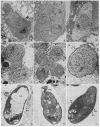Abstract
Meiospores of a microsporidian parasite Amblyospora sp. (Protozoa: Microspora) from larval Aedes cantator mosquitoes were directly infectious to an alternate copepod host, Acanthocyclops vernalis (Arthropoda: Crustacea). Infections ranged from 6.7% to 60.0% in laboratory tests when meiospores and copepods were maintained together for 10-30 days in filtered water from the breeding site or in a balanced salt solution. Pathogen development takes place within host adipose tissue and is fatal to the copepod. The entire developmental sequence of this microsporidian in the copepod is unikaryotic and there is no ultrastructural evidence of a sexual cycle or a restoration of the diploid condition in the alternate host. Single uninucleated spores similar to those previously described for the genus Pyrotheca are formed. Results demonstrate that haploid meiospores of Amblyospora from mosquitoes have the function of transmitting the pathogen to another host and that members of this genus are polymorphic and have at least three distinct developmental cycles, each producing a different spore.
Full text
PDF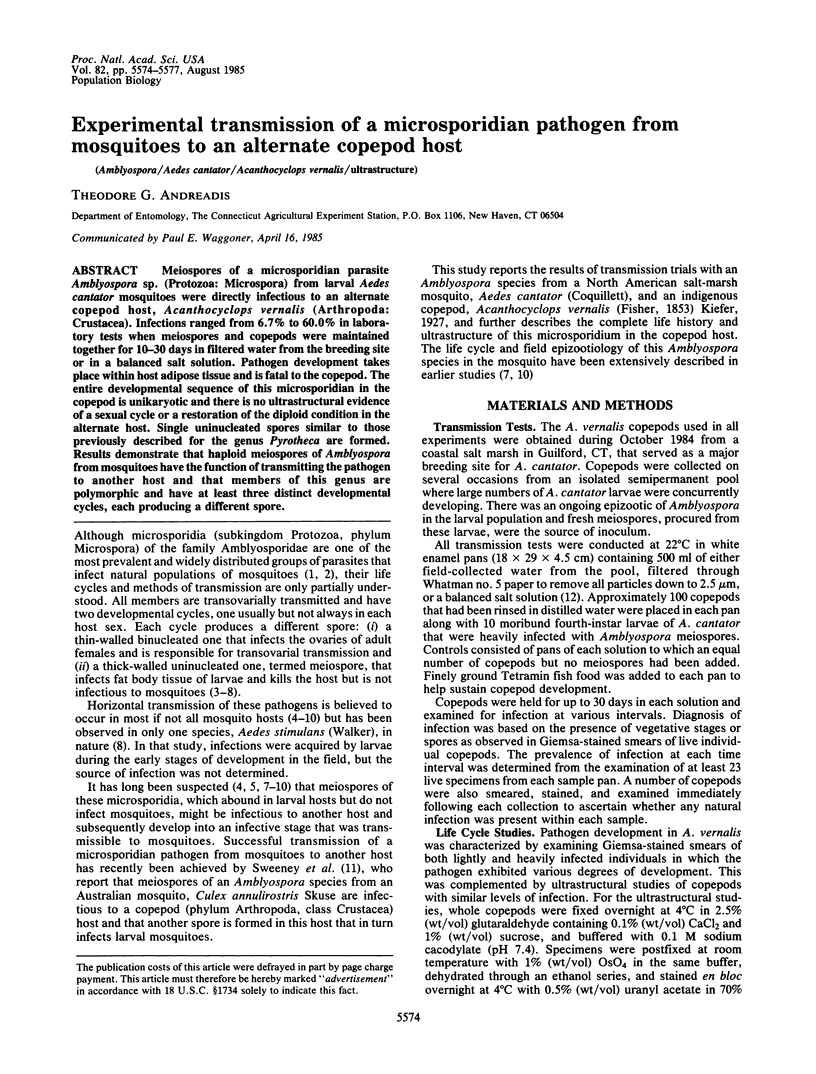
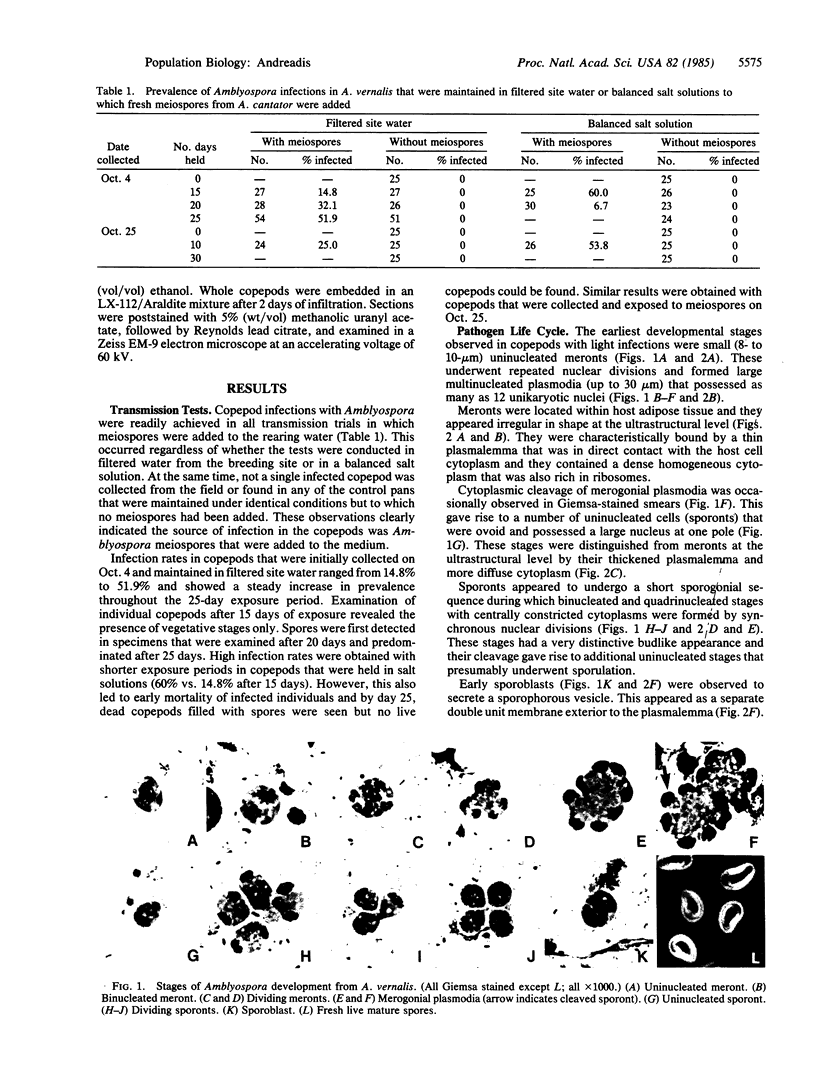
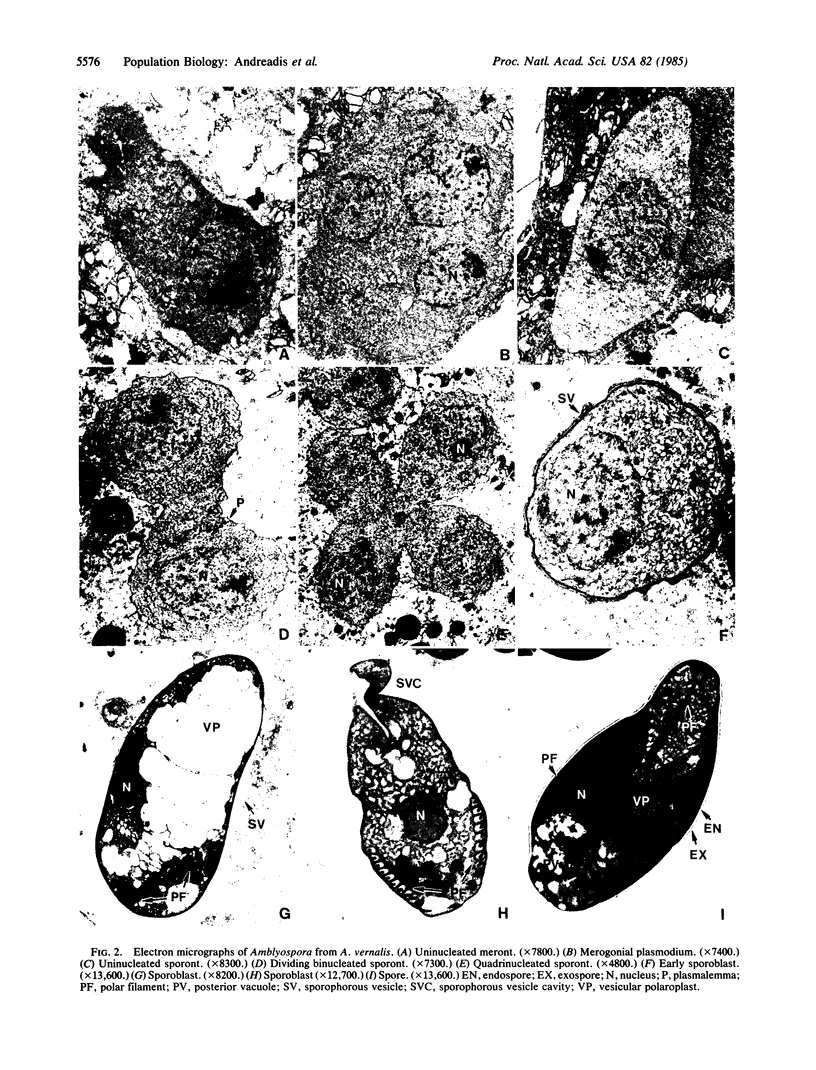
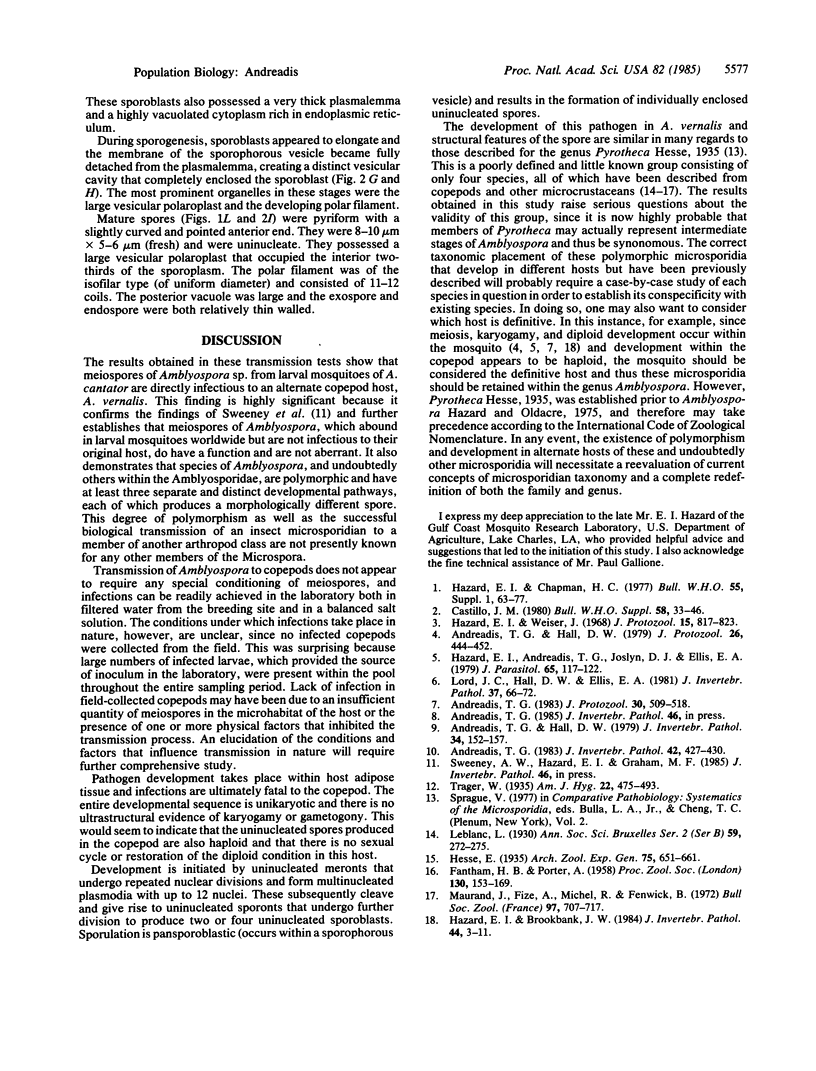
Images in this article
Selected References
These references are in PubMed. This may not be the complete list of references from this article.
- Andreadis T. G. An epizootic Amblyospora sp. (Microspora: Amblyosporidae) in field populations of the mosquito, Aedes cantator. J Invertebr Pathol. 1983 Nov;42(3):427–430. doi: 10.1016/0022-2011(83)90192-1. [DOI] [PubMed] [Google Scholar]
- Andreadis T. G., Hall D. W. Development, ultrastructure, and mode of transmission of Amblyospora sp. (Microspora) in the mosquito. J Protozool. 1979 Aug;26(3):444–452. doi: 10.1111/j.1550-7408.1979.tb04651.x. [DOI] [PubMed] [Google Scholar]
- Andreadis T. G., Hall D. W. Significance of transovarial infections of Amblyospora sp. (Microspora:Thelohaniidae) in relation to parasite maintenance in the mosquito Culex salinarius. J Invertebr Pathol. 1979 Sep;34(2):152–157. doi: 10.1016/0022-2011(79)90095-8. [DOI] [PubMed] [Google Scholar]
- Hazard E. I., Chapman H. C. Microsporidan pathogens of Culicidae (mosquitos). Bull World Health Organ. 1977;55 (Suppl 1):63–77. [PMC free article] [PubMed] [Google Scholar]
- Hazard E. I., Weiser J. Spores of Thelohania in adult female anopheles: development and transovarial transmission, and redescriptions of T. legeri Hesse and T. obesa Kudo. J Protozool. 1968 Nov;15(4):817–823. doi: 10.1111/j.1550-7408.1968.tb02221.x. [DOI] [PubMed] [Google Scholar]




